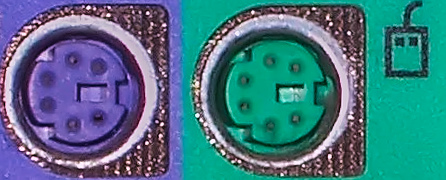Learning Resources
Mouse Interfaces
To transmit their input, typical cabled mice use a thin electrical cord terminating in a standard connector, such as RS-232C, PS/2, ADB or USB. Cordless mice instead transmit data via infrared radiation or radio (including Bluetooth), although many such cordless interfaces are themselves connected through the aforementioned wired serial buses.
While the electrical interface and the format of the data transmitted by commonly available mice is currently standardized on USB, in the past it varied between different manufacturers. A bus mouse used a dedicated interface card for connection to an
IBM PC or compatible computer.
Mouse use in DOS applications became more common after the introduction of the Microsoft mouse, largely because Microsoft provided an open standard for communication between applications and mouse driver software. Thus, any application written to use the Microsoft standard could use a mouse with a Microsoft compatible driver (even if the mouse hardware itself was incompatible with Microsoft's). An interesting footnote is that the Microsoft driver standard communicates mouse movements in standard units called "mickeys",as does the Allegro library.
Serial interface and protocol
Standard PC mice once used the RS-232C serial port via a D-subminiature connector, which provided power to run the mouse's circuits as well as data on mouse movements. The Mouse Systems Corporation version used a five-byte protocol and supported three buttons. The Microsoft version used a three-byte protocol and supported two buttons. Due to the incompatibility between the two protocols, some manufacturers sold serial mice with a mode switch: "PC" for MSC mode, "MS" for Microsoft mode.
PS/2 interface and protocol
With the arrival of the IBM PS/2 personal-computer series in 1987, IBM introduced the eponymous PS/2 interface for mice and keyboards, which other manufacturers rapidly adopted. The most visible change was the use of a round 6-pin mini-DIN, in lieu of the former 5-pin connector. In default mode (called stream mode) a PS/2 mouse communicates motion, and the state of each button, by means of 3-byte packets.
A Microsoft IntelliMouse relies on an extension of the PS/2 protocol: the ImPS/2 or IMPS/2 protocol (the abbreviation combines the concepts of "IntelliMouse" and "PS/2"). It initially operates in standard PS/2 format, for backwards compatibility. After the host sends a special command sequence, it switches to an extended format in which a fourth byte carries information about wheel movements. The IntelliMouse Explorer works analogously, with the difference that its 4-byte packets also allow for two additional buttons (for a total of five).
Mouse vendors also use other extended formats, often without providing public documentation. The Typhoon mouse uses 6-byte packets which can appear as a sequence of two standard 3-byte packets, such that an ordinary PS/2 driver can handle them. For 3-D (or 6-degree-of-freedom) input, vendors have made many extensions both to the hardware and to software. In the late 1990s Logitech created ultrasound based tracking which gave 3D input to a few millimetres accuracy, which worked well as an input device but failed as a profitable product. In 2008, Motion4U introduced its "OptiBurst" system using IR tracking for use as a Maya (graphics software) plugin.
An image of PS/2 connector -

USB
The industry-standard USB (Universal Serial Bus) protocol and its connector have become widely used for mice; it's currently among the most popular types.
An image of USB mouse -
Cordless or wireless
Cordless or wireless mice transmit data via infrared radiation or radio (including Bluetooth). The receiver is connected to the computer through a serial or USB port, or can be built in (as is sometimes the case with Bluetooth). Modern non-Bluetooth wireless mice use USB receivers. Some of these can be stored inside the mouse for safe transport while not in use, while other, newer mice use newer "nano" receivers, designed to be small enough to remain plugged into a laptop during transport, while still being large enough to easily remove.


